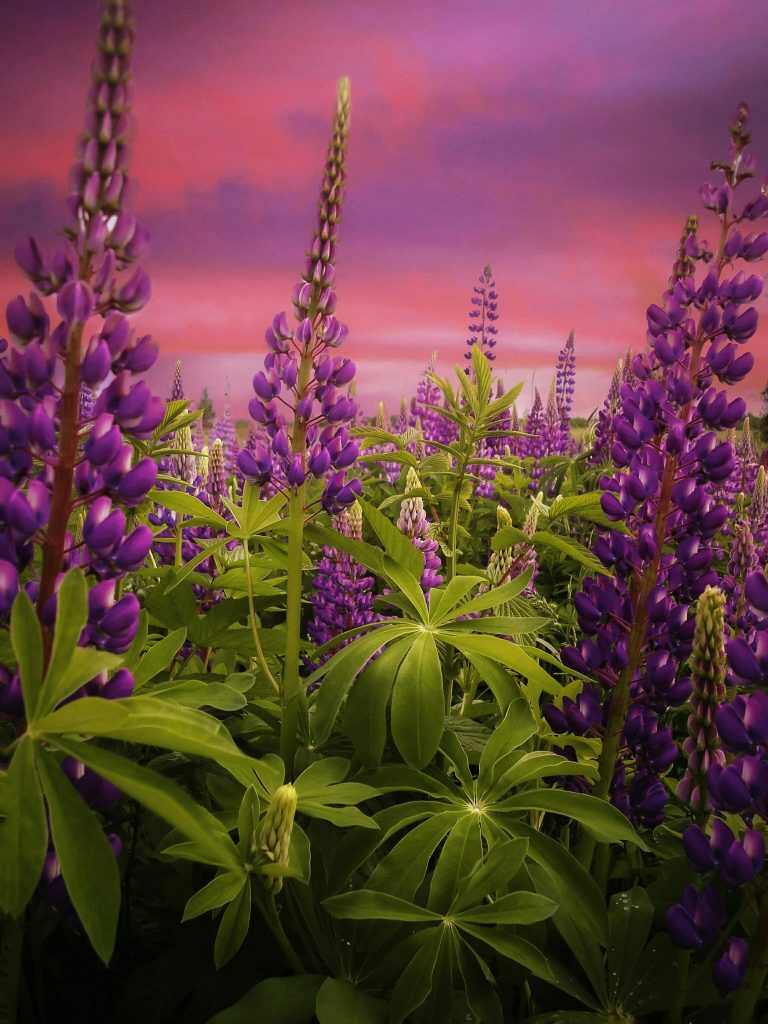Lupin Seeds: Everything You Need to Know
Oh, friend, have you heard about the gorgeous marvels of lupin seeds? Let me spill the tea on everything you need to know about these magical little early spring wonders.
Lupin seeds are also affectionately known as bluebonnet seeds. Picture them in your mind’s eye: delicate blooms in shades of purple, blue, white, or yellow, swaying gently in the breeze like a scene from a dream. These beauties can dazzle your garden for up to three months, putting them among the reigning queens of the flower kingdom.
The First Year
Here’s a little secret: they’re a tad shy in their first year, opting for just foliage instead of flaunting their flowers. But, don’t despair, because once these flowers start to come in and then die back, you can encourage a second round of blooms by deadheading the old ones. That’s right – they’ll bloom a second time, just to show you what they’re really made of.

Toxic But We Love Her
Brace yourself for a plot twist: lupin seeds are toxic to humans and animals. But fear not, dear readers, for their allure lies not in their taste but in their ability to captivate pollinators! These little gems are like the ultimate wingman for your garden, attracting bees, butterflies, and other lovely creatures to dance among their petals. Just don’t let Fido eat ‘em.
In fact, a traditional Portuguese snack, called Lupini Beans, requires much soaking and boiling before their bitterness and toxic alkaloids can be made palatable and safe to eat. Learn more about it here.
Growing Lupin Seeds
Let’s get down to the nitty-gritty of nurturing these floral darlings. Lupin seeds have a preference for acidic soil and crave about six hours of sunlight daily. Oh, and they adore a good mulching session to keep their roots cozy and happy. Just be mindful that they’re a bit sensitive to extreme heat, so keep those watering cans handy during scorching temperatures. They develop a significant taproot, so they don’t transplant well.
And here’s a little tidbit for all you green-thumbed enthusiasts: lupin seeds are prolific seed producers. But alas, they’re not the self-seeding type, so you’ll need to roll up your sleeves and collect those seeds if you want to keep the lupin party going. You’ll likely find yourself composting or giving away most of them because who can keep up?
When it comes to planting, remember to give these lovelies some breathing room – about 12 inches between plants should do the trick. And if you’re short on garden space, fear not! Lupin seeds thrive in pots, bringing a touch of whimsy to even the tiniest balcony or patio.

Sprouting
Now, let’s talk about the art of sprouting lupin seeds. It’s as easy as snipping a tiny portion of the husk off and soaking them overnight. Think of it as their beauty sleep before they burst forth with life and color. And for those of you wondering how to perform such delicate surgery, fear not! A clean set of nail clippers will do the trick.
Oh, let’s not forget the most magical part of all: lupin seeds are among the first signs that spring has sprung! Imagine waking up to their delicate foliage, a promise of brighter, longer days and blooming gardens ahead. Even when not in full bloom, their foliage is a sight to behold, like a lush tropical vibe adorning your outdoor sanctuary.
In conclusion, dear readers, lupin seeds are not just another pretty face in the garden. They’re the silent heroes, the unsung stars, the enchanting blooms that herald the arrival of spring. So, whether you’re a seasoned gardener or a budding enthusiast, why not add a dash of lupin magic to your outdoor oasis? Trust me, your garden – and your soul – will thank you for it.
Lupin Seeds – Beyond Beauty
As we bid adieu to our lupin seeds, it’s essential to acknowledge their significance beyond their aesthetic appeal. These botanical marvels not only contribute to the visual splendor of our gardens but also play a crucial role in the ecosystem.
Soil Enhancement
One of the lesser-known benefits of lupin seeds lies in their soil-enhancing abilities. These plants belong to the legume family, renowned for their nitrogen-fixing prowess. Through a symbiotic relationship with specialized bacteria in their root nodules, lupins can convert atmospheric nitrogen into a form usable by plants, enriching the soil in the process. This natural fertilization not only promotes the health and vigor of surrounding vegetation but also reduces the need for synthetic fertilizers, thus minimizing environmental impact.
Wildlife
Lupin seeds offer a valuable food source for various wildlife species. While their toxicity to humans and domestic animals is well-documented, they serve as a vital component of the diets of certain wildlife, particularly birds and small mammals. The seeds provide nourishment and sustenance, supporting biodiversity and ecological balance within their native habitats.
Traditions and Culture
Beyond their ecological significance, lupin seeds hold cultural and historical relevance in various societies worldwide. Indigenous communities have long revered these plants for their medicinal properties and ceremonial significance. Additionally, lupins have been utilized in traditional agriculture practices, serving as rotational crops to improve soil fertility and prevent erosion.
Role in Sustainability
In contemporary times, the versatility of lupin seeds extends beyond ornamental gardening. With increasing interest in sustainable food production and alternative protein sources, lupins have emerged as a promising candidate. These legumes boast a high protein content and are gluten-free, making them suitable for individuals with dietary restrictions. Moreover, ongoing research explores their potential applications in livestock feed, biofuel production, and soil remediation, highlighting their versatility and value in modern agriculture.
As we reflect on the journey of lupin seeds from humble beginnings to botanical wonders, let us cherish their multifaceted contributions to our lives and the environment. Beyond their role as mere decorative elements, lupins embody resilience, adaptability, and symbiosis—a testament to the intricate web of life that sustains our planet.
In conclusion, the allure of lupin seeds transcends their visual allure, encompassing ecological, cultural, and nutritional dimensions. Whether gracing our gardens with their vibrant blooms, enriching the soil with their nitrogen-fixing abilities, or nourishing wildlife with their nutritious seeds, lupins stand as emblematic symbols of nature’s resilience and abundance. So, as we bid farewell to these enchanting botanical companions, let us carry forward their legacy of beauty, utility, and ecological stewardship, ensuring that future generations may continue to marvel at the wonders of lupin seeds.
